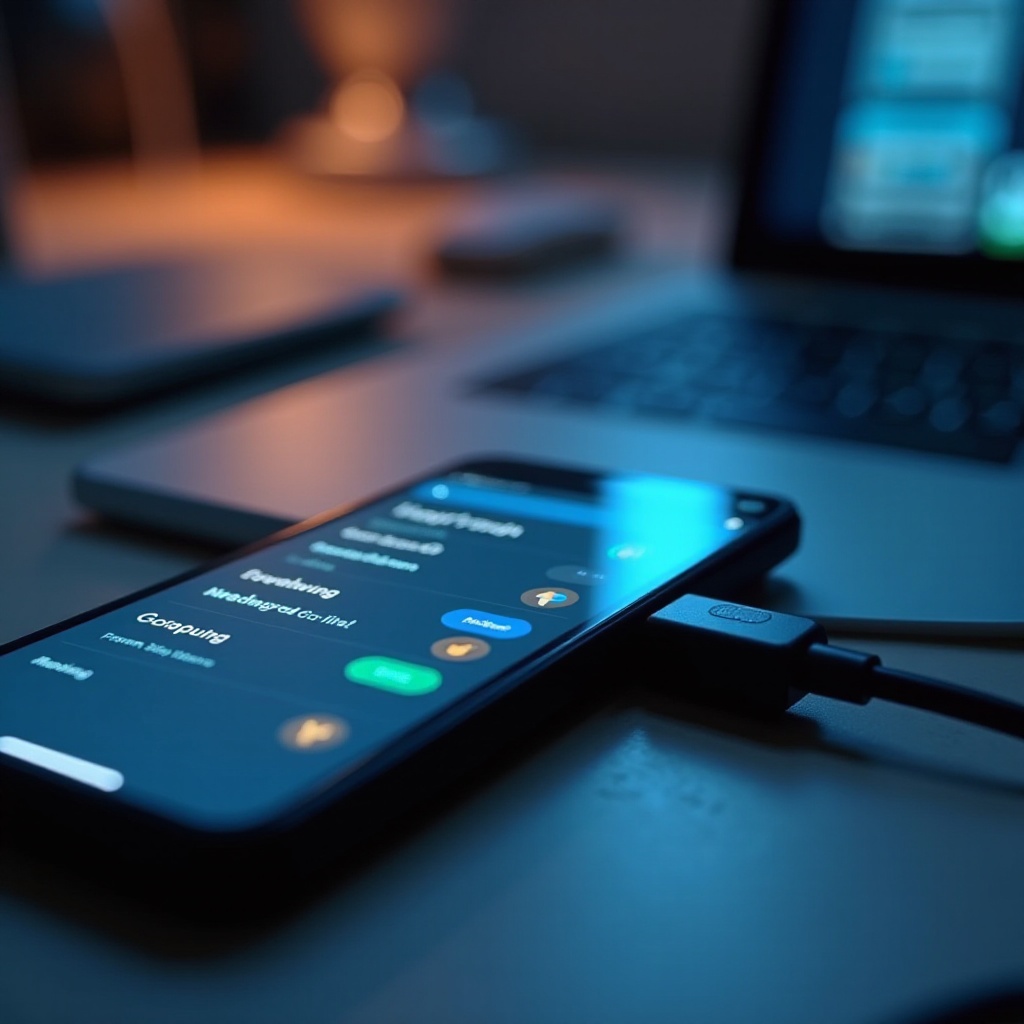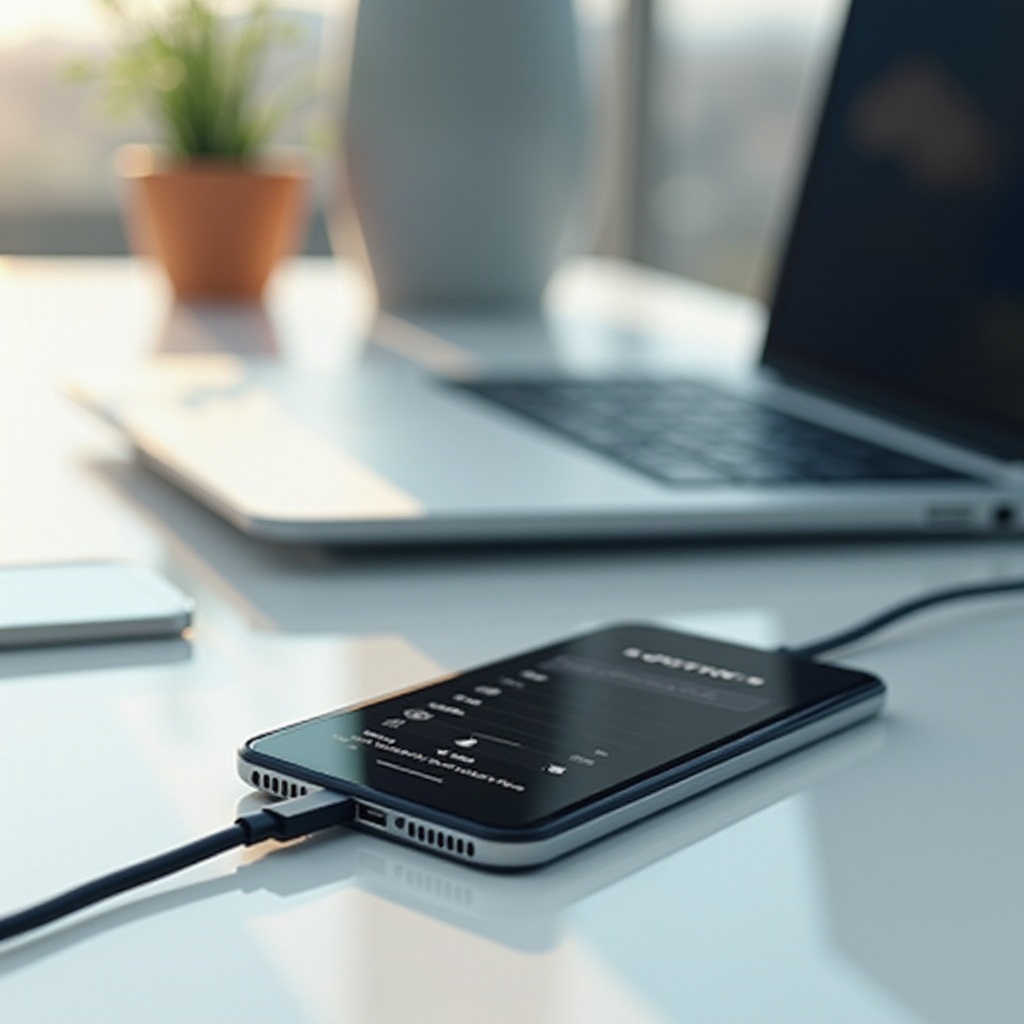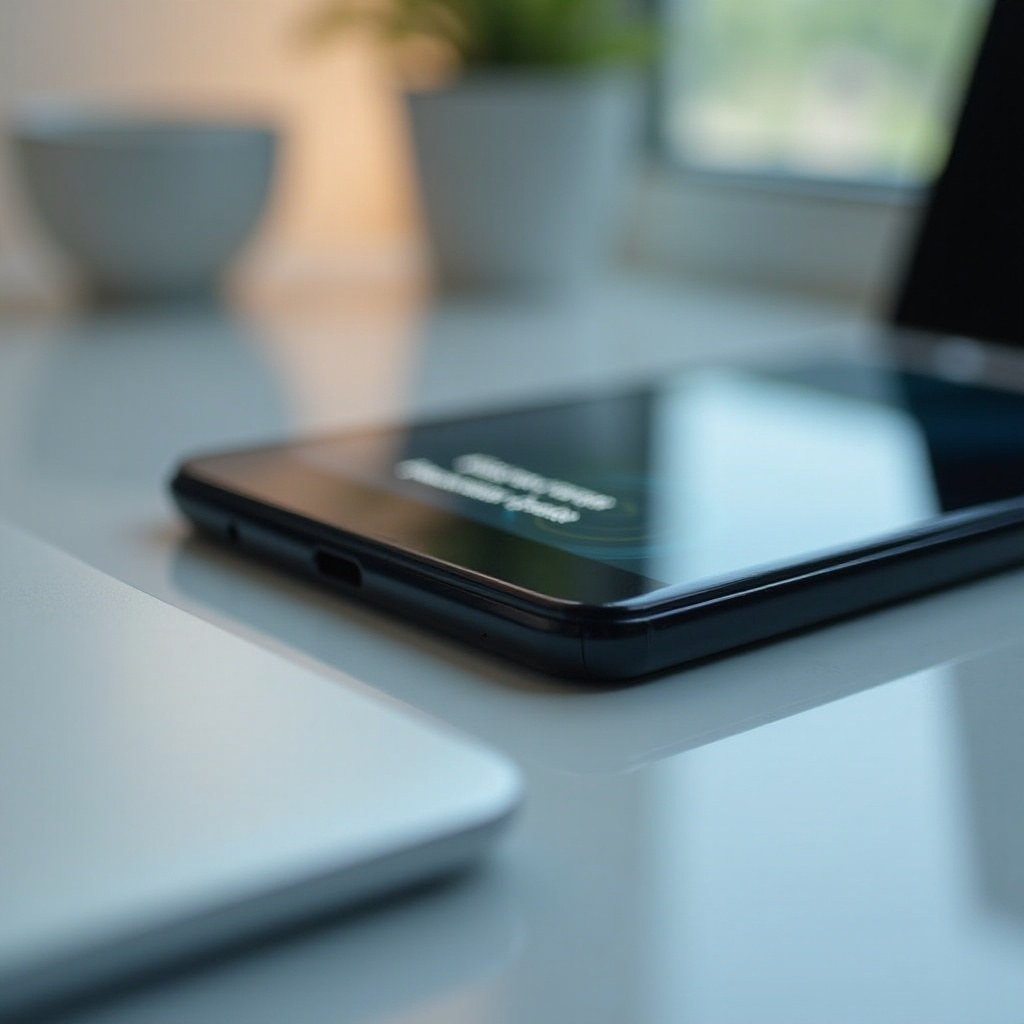Introduction
Over time, cached files related to USB connections can accumulate on your Android device, resulting in performance issues and connectivity problems. Clearing this USB cache plays a crucial role in maintaining optimal performance. This guide will walk you through the process, both manually and by using dedicated apps, and offer tips to sustain device health and prevent future problems.

Understanding USB Cache on Android Devices
On Android devices, the USB cache is designed to store temporary data files to expedite the loading process during USB-connected interactions. This cached data helps in smooth file operations by minimizing delays. However, while it serves as an advantage, excessive cache growth can detrimentally impact device speed and efficiency. Understanding the dynamics of this cache system is vital in safeguarding your device’s performance.
For Android users, proactive USB cache management is key to avoiding lags and connectivity errors. Too much redundant data can lead to frequent slowdowns and can even interfere with the basic operations of your USB devices.
Through effective cache management, you improve not only the operational speed but also enhance the overall quality of interaction with USB devices on your Android phone.

Symptoms of USB Cache Issues on Your Android
Being alert to the symptoms associated with rampant USB cache growth allows for prompt intervention. Identifying these signs early lets you address concerns before they become major issues.
- Slow USB Connectivity: Delays when connecting USB peripherals can suggest cache overload.
- Frequent Freezing or Lagging: Recurrent device freezing or lagging during file transfers often indicates a burdened cache.
- Unexplained Connectivity Errors: Efforts to connect devices failed, or unexpected disconnections could stem from cache-related complications.
Recognizing these symptoms timely provides the opportunity to deploy solutions either manually or via apps designed for cache management, mitigating these problems swiftly.

Manual Methods to Clear USB Cache
Manual resolution of USB cache issues doesn’t require external software and can often be sufficient. Here are practical steps for clearing the cache on your Android device.
Step-by-Step Instructions for Android Settings
- Open Settings: Launch your device’s ‘Settings’ menu.
- Select Storage or Memory: Navigate to either ‘Storage’ or ‘Memory.’ This varies by device.
- Choose Cached Data: Tap on ‘Cached Data,’ and you’ll receive a prompt to clear it.
- Confirm and Clear: Select ‘OK’ to remove all cached data.
Clearing Cache Using Android Debugging Tools
- Enable Developer Options: Visit ‘Settings,’ tap ‘About Phone,’ and tap ‘Build Number’ seven times to unlock developer options.
- Access Developer Options: Go back to ‘Settings’ and open the ‘Developer Options’ menu.
- Select USB Debugging: Enable ‘USB Debugging’ for greater administrative control.
- Use ADB Commands: Connect your Android to a PC and apply Android Debug Bridge (ADB) commands to specifically clear cache files.
These manual techniques are effective for quickly addressing USB cache-related concerns without resorting to third-party tools.
Top Apps for Clearing USB Cache Efficiently
Specialized applications offer an efficient alternative to manually clearing USB cache, adding features like automatic scheduling and monitoring.
Features to Look for in Cache-Clearing Apps
When selecting an app, look for these features to secure efficient and comprehensive cache management:
- User-Friendly Interface: Apps should be intuitive and easy to navigate.
- Automatic Scheduling: Automatic scheduling helps forecast and prevent cache overloads.
- Comprehensive Cleaning Options: Make sure the app can clear various caches, not just the USB cache.
How to Use These Apps Effectively
- Install the App: Download a reliable app from Google Play Store.
- Grant Required Permissions: Approve the app permissions for full functionality.
- Set Preferences: Configure preferences for automatic clearing and to specify which data types to continually purge.
- Monitor Cache Levels: Keep an eye on cache growth and execute necessary clearances based on app recommendations.
Choosing the right app can seamlessly control USB cache, maintaining device performance without regular manual intervention.
Tips for Maintaining USB Cache Health
Consistent maintenance and monitoring are crucial to prevent USB cache from affecting device performance negatively. Here are key tips.
Best Practices for Prevention
- Regular Software Updates: Keep your Android device updated as it enhances the OS’s cache management.
- Minimize USB Device Usage: Keep USB connections to a minimum to reduce potential cache buildup.
- Monitor Storage: Regularly check the device’s storage status to ensure there’s enough free space.
Scheduling Regular Cache Clearings
By setting routine cache clearing schedules, you can easily avoid cache overload:
- Set Monthly Reminders: Use calendar apps or task managers to set reminders for manual or app-assisted cache clearings.
- Alternate Methods: Mix up manual and automated clearing sessions for optimum cache and device performance.
Integrating these habits into everyday usage will ensure your device functions at its best with minimal intervention.
Conclusion
Keeping your Android’s USB cache in check is fundamental for prolonged device efficiency. By noticing early warning signs, leveraging both manual and application-based clearing techniques, and incorporating preventive measures, you can ensure your Android device remains responsive and operates smoothly. Regular maintenance keeps your device reliable, providing a seamless user experience across the board.
Frequently Asked Questions
What happens if I don’t clear the USB cache on my Android?
Neglecting USB cache can slow down your device, cause connectivity problems, and exacerbate errors during USB interactions, impacting user experience.
Can clearing USB cache delete important files?
No, clearing the USB cache only removes temporary data without affecting permanent files or applications.
How often should I clear the USB cache on my Android device?
Clearing the USB cache once a month or when performance issues arise is recommended to prevent excessive data accumulation.